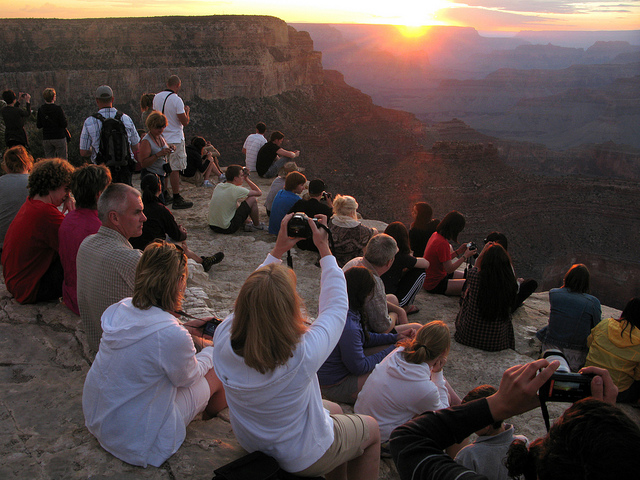Last year, the National Park Service’s centennial, saw a record number of people visiting national parks in the U.S. The more than 330 million visits shattered the previous record (which was set the year before) by more than 20 million.
This flood of visitors is not necessarily good news for the parks. On Yale’s Environment360 blog, Jim Robbins explains:
The visitor crush is creating two main problems – a steep decline in the quality of visitor experience that a national park is supposed to provide, and damaging impacts on the ecology of these intact natural places. . . . Instead of coming to get a sense of nature transcendent, people wait an hour or two in traffic just to get through the park gates, and day hikers jostle with hundreds of other people on one-lane trails eroded by overuse. Trash bins can’t be emptied fast enough and overflow onto the ground. Wild desert waterfalls at the end of a three- or four-mile trail feel less like a red rock cathedral and more like a crowded beach. Lines of vehicles to get a first-come, first-served camping spot start forming at 4:30 or 5 a.m., and many come away empty-handed. Amusement-park-style lines form to get on the shuttle and into restrooms.
Ironically, the National Park Service is hard up, despite record visits. It has a maintenance backlog of more than $11 billion.
Is there an obvious solution here? National parks are incredibly cheap for such incredible and popular attractions. The most visited park—Great Smoky Mountain National Park—is free and a week-long pass to both Yellowstone and Grand Teton is $50 per vehicle. As a point of comparison, Disneyland starts at $100 per person per day.
Raising fees could help reduce overcrowding and provide much-needed funds for maintenance and improvements. National parks keep 80 percent of the fees they collect. So the added revenue could be put back into the parks and help reduce the maintenance backlog.
Any proposal to raise fees is immediately resisted because it’s believed that higher fees will prevent many Americans from enjoying parks that “belong to all of us,” rhetorically speaking. Barring an astronomical fee increase, such fears are likely overblown. Most people have to travel long distances to visit national parks. Entrance fees, even if they were substantially increased, would continue to be a tiny fraction of the total cost of visiting.
Alternatively, parks could embrace congestion pricing—charging higher fees when park attendance is unusually high to encourage people to visit on less popular days. This could reduce overcrowding on peak days and increase funding for maintenance, while retaining low fees on unpopular days for visitors who might otherwise be priced out.
Another option would be to charge activity fees in particularly busy parks for popular hikes, mountain climbs, etc. This could shift more of the cost of parks to the people who use it most, while keeping costs low for the drive-thru tourist.
If national parks continue to get record crowds, the experience of visiting these spectacular places will change. Raising fees would be a good way to slow the pace of that change, while providing a funding stream to mitigate any negative impacts.




